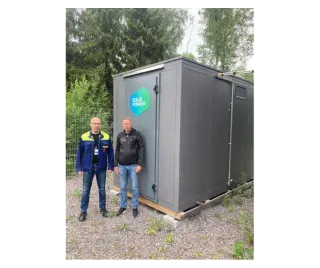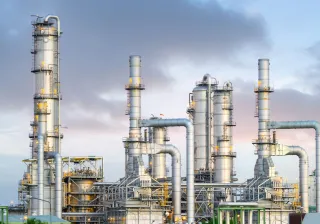There are thousands of connecting towers, weather stations, construction sites, railways and other sites outside the electricity network that require small amounts of electricity. The VTT-led project found that fuel cell technology enables reliable, remote controlled and more environmentally-friendly electricity production even in difficult-to-reach locations with extreme conditions.
"Fuel cell technology, which utilises gas, proved to be very effective in the electrification of sites located in extreme conditions, ranging from freezing temperatures of -40 degrees Celsius to tropical temperatures above +50 degrees Celsius," says VTT Research Professor Jari Kiviaho, who coordinated the RoRePower project.
Traditionally, the electricity needed in difficult-to-reach locations has been produced with diesel generators. The efficiency of the solid oxide fuel cell technology tested during the project is better than traditional methods, and bio-based fuel can also be used to produce electricity without emissions even in remote locations.
"This solution has up to tens of thousands of potential applications worldwide. In Finland, this can be utilised in a variety of ways including the electrification of weather stations, remote traffic lights and cameras used for border control and in the charging of drones," Kiviaho describes.
Another advantage of fuel cell technology is freedom of supply, as one refuelling can be used to produce electricity through remote monitoring alone for up to a year. The system can also be used in parallel with other power sources such as solar cells or batteries.
Karjaan Puhelin data centre served as test site in Finland
The international project saw fuel cell equipment tested at more than 50 sites around the world. In Finland, the equipment was tested at the Karjaan Puhelin data centre, which had an average electricity demand of less than 1 kW. SolydEra's fuel cell system was successfully tested at the site for a period of about two years. During this period, the system produced all the electricity needed by the data centre using gas supplied by Auris Energia.
VTT Research Engineer Mikko Grommi and Karjaan Puhelin Infrastructure and Property Manager Magnus Henriksson at the Karjaan Puhelin data centre.

"Karjaan Puhelin has long studied and introduced various alternative forms of energy, such as solar energy and wind power, but batteries have been the most common option for backup power. When VTT presented the fuel cell project to us, the decision to join the project was easy. This has been an interesting project that has provided a great deal of useful information on fuel cells and their benefits and challenges. I see the future of fuel cell technology as being very bright," says Magnus Henriksson, Infrastructure and Property Manager at Karjaan Puhelin.
"The project proved that a combination of gas and fuel cells has potential for challenging electrification sites, such as difficult-to-reach locations outside the electrical grid," says Perttu Lahtinen, Deputy Managing Director at Auris Energia.
The systems developed and tested during the project are now commercial products and are ideal for small-scale electricity production in exceptionally challenging conditions.
RoRePower was a 4-year EU-funded project aimed at developing and testing small power sources for remotely controlled difficult-to-reach sites located outside the power grid. In addition to VTT, the consortium included Sunfire, New Enerday, SolydEra, EFCF and 3E Energy. The project has received funding from the EU Fuel Cell and Hydrogen Joint Undertaking under contract number 824953 and the Horizon 2020 research and innovation programme.





